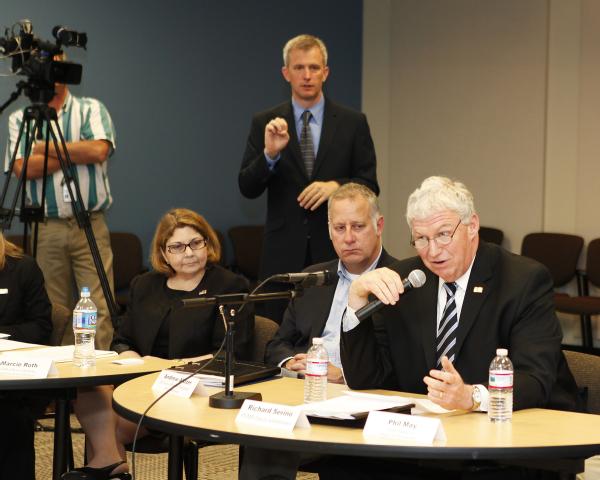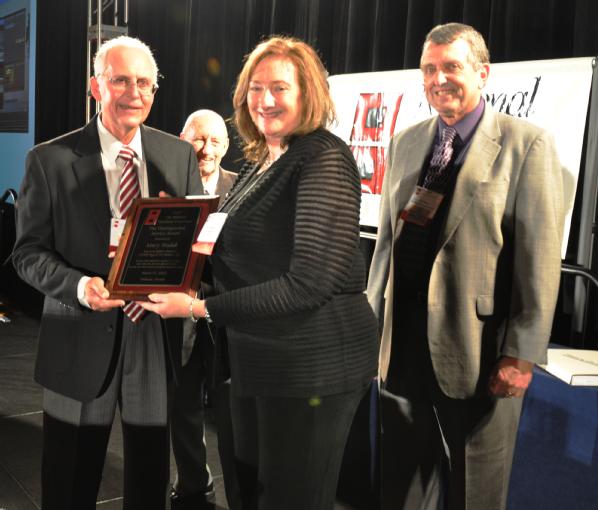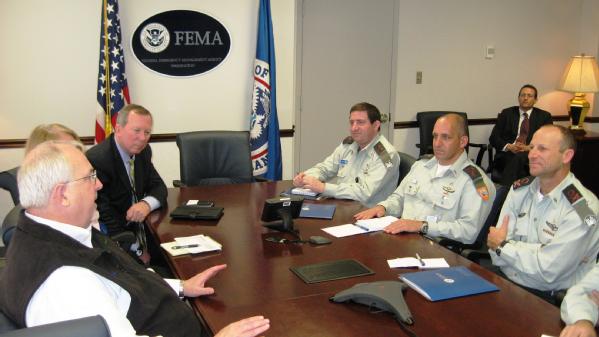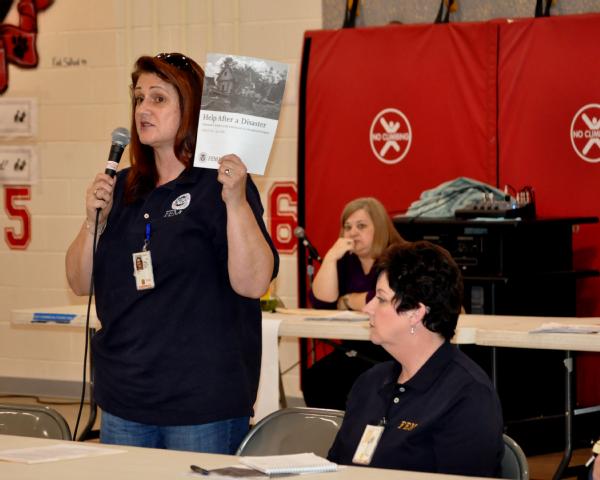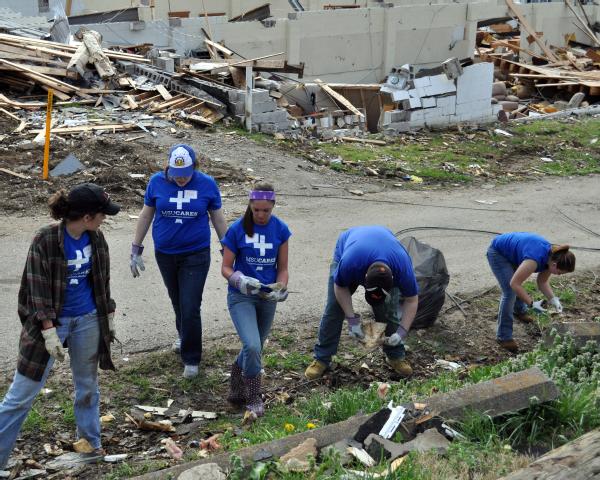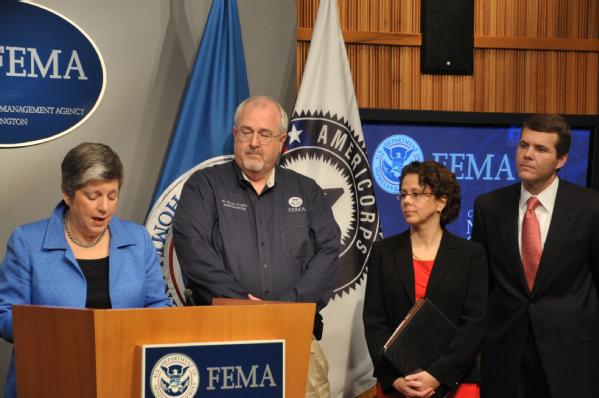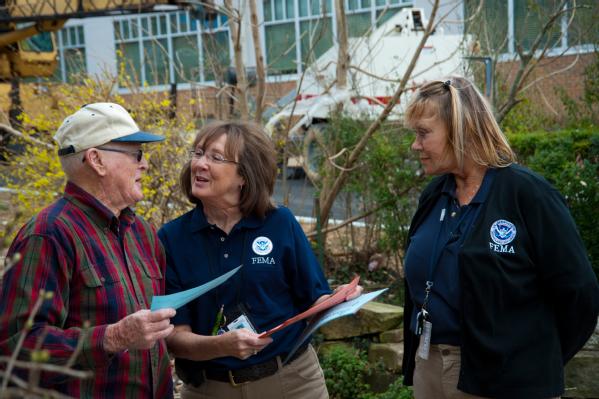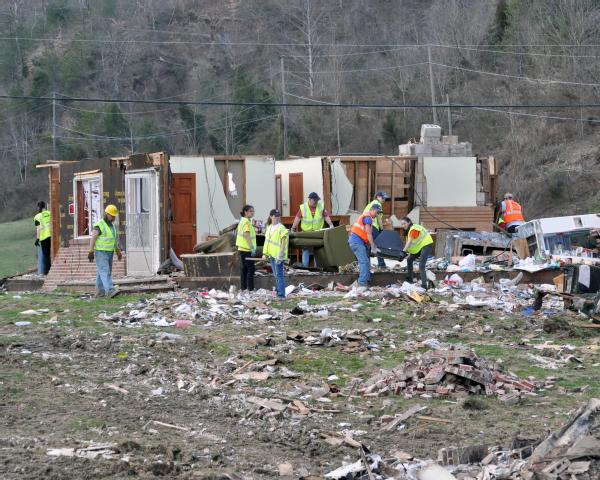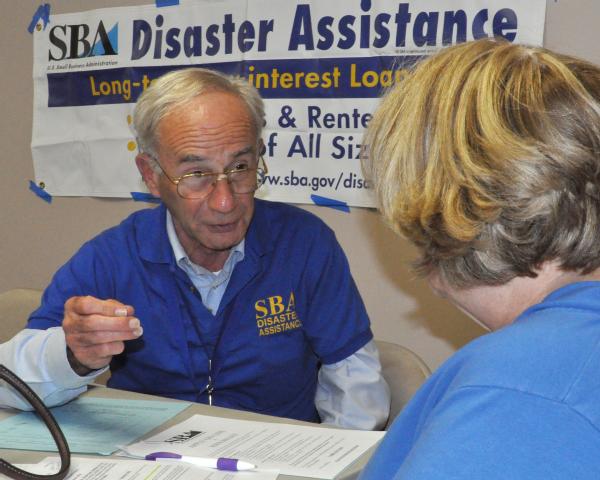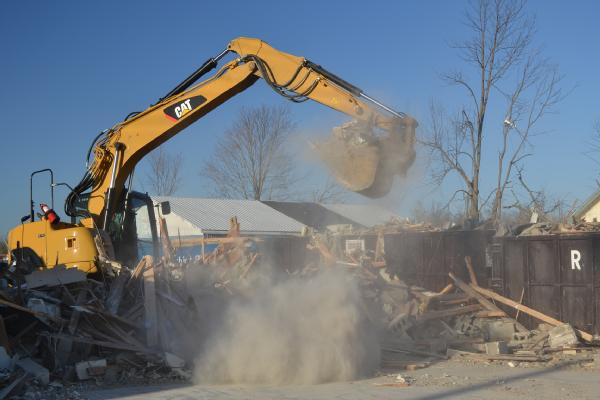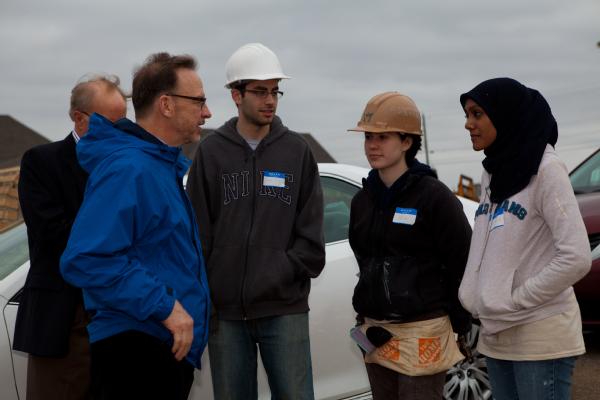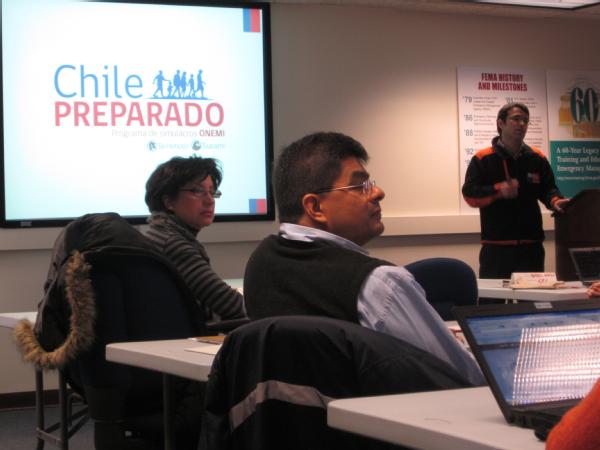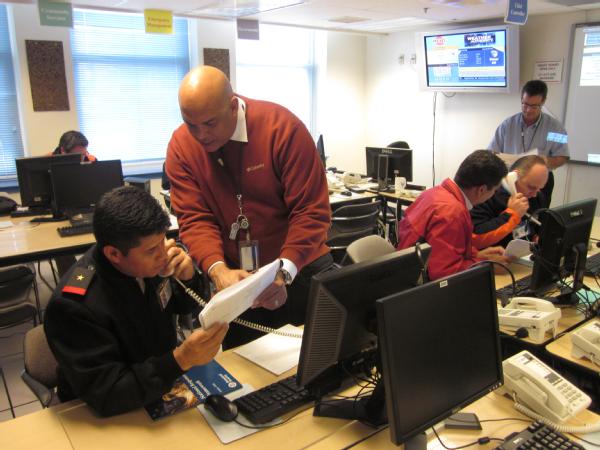Posted by: Mark Peterson, Public Affairs
Over the past several weeks, we’ve talked a lot about supporting several states (Illinois, Indiana, Kentucky, Ohio and West Virginia) with joint preliminary damage assessments as a result of the recent wave of severe storms and tornadoes, and I wanted to provide a little information into what this means, and what a PDA team does when they are on the ground.
PDA Teams
Following a disaster, a Governor requests PDAs as the first step in the declaration process. Federal representatives, including the U.S. Small Business Administration, join state, tribal, and local officials to form what we call “PDA teams.” They are responsible for surveying damages in designated counties, and they do this by going city-by-city, street-by-street, door-to-door, until
impacted areas identified by state, tribal, and local officials have been thoroughly assessed.
The joint PDA teams are not just looking at the numbers of damaged or destroyed homes, they’re also obtaining information on the impact to the community as a whole. In larger disasters or when affected areas are inaccessible, PDAs may be conducted by car or plane.
They talk to as many residents as possible to ensure detailed assessments are made. From walking door-to-door in neighborhoods that have experienced damage, to sometimes walking among debris piles and engaging one-on-one with survivors who have been personally impacted, the PDA teams conduct their assessments to fully understand how the disaster has and will impact you and your family. Even when the damage may not seem apparent, the team is looking for all types and signs of damage, such as water lines from flooding, damaged roof and windows, and damage to doors and windows.
Many of the questions the teams may ask are aimed to garner a clear understanding of the impacts, including: whether you have insurance; whether your utilities are out; whether you have a place to stay; was your job affected; did your children need to change schools; was your car damaged; and do you have special medical needs.
A PDA team may not need to talk to every survivor. If a disaster survivor has already reported their damages to local or state officials, those reports will be shared with the PDA team and cross-referenced with the street report, and then all of the information will be considered for the assessments.
Along with assessing the damages that affected individuals within a community, PDA teams consisting of state, federal, tribal and local officials will also assess the impact of the incident on public infrastructure. This includes the cost of emergency measures, such as debris removal, and repair or restoration of public facilities such as roads and buildings.
Once assessments for a jurisdiction such as a county or parish are completed, the team moves onto the next as the effort is consolidated to help out in other areas. The goal is to complete the job efficiently and thoroughly to ensure the teams have captured the total impact to the communities and area of the state affected by the disaster.
The Next Step
Once all of the data has been compiled, it’s turned over to the state’s Emergency Management Agency.
It is important to remember that PDA teams do not determine whether a major disaster declaration will be issued.
The information that is collected is provided to the state for a governor to determine if he or she will request federal assistance. If the Governor believes the damages “are beyond state and local capabilities,” he or she will submit the written request to the President and specify the type of assistance needed and which counties are affected. It is important to remember that FEMA assistance is supplementary in nature and will only be authorized when a disaster is of the severity and magnitude to be beyond the effective response of the state and affected local governments. Moreover, legally, FEMA cannot duplicate assistance received through any other source including insurance or other federal programs.
What Should I Be Doing Now?
What should you do while the Governor’s request is pending? As soon as possible, notify your insurance company and file a claim. Keep your receipts of any disaster-related expenses such as lodging, medical, repair and cleaning supplies, etc. You should also make a list of the major items that have been damaged such as utilities, appliances, furniture, and personal property.
If you have immediate needs such as shelter, food, water, clothing, etc., you should seek help from the local voluntary and faith-based groups in your area.
What is a Major Disaster Declaration?
If the President approves the request, the declaration will specify what forms of assistance are available. If the Presidential declaration includes Individual Assistance, then individuals can apply if their county was part of the declaration. Even if you have already reported your damage to the Red Cross, local, or state officials, and the PDA team stopped to talk with you – this IS NOT THE APPLICATION for FEMA assistance.
To be considered eligible for federal assistance, you need to apply with FEMA once a declaration has been made – either by calling our toll-free number (Call (800) 621-3362 / TTY (800) 462-7585) or registering on our
full website or
mobile site.
We understand that dealing with the aftermath of a disaster is a stressful and trying time, and we hope that you will never need to go through the process of assessing and reporting damages. The true fact is that disasters happen, and every bit of knowledge we have about the process arms us all in a way to make the recovery just maybe a small bit easier.

